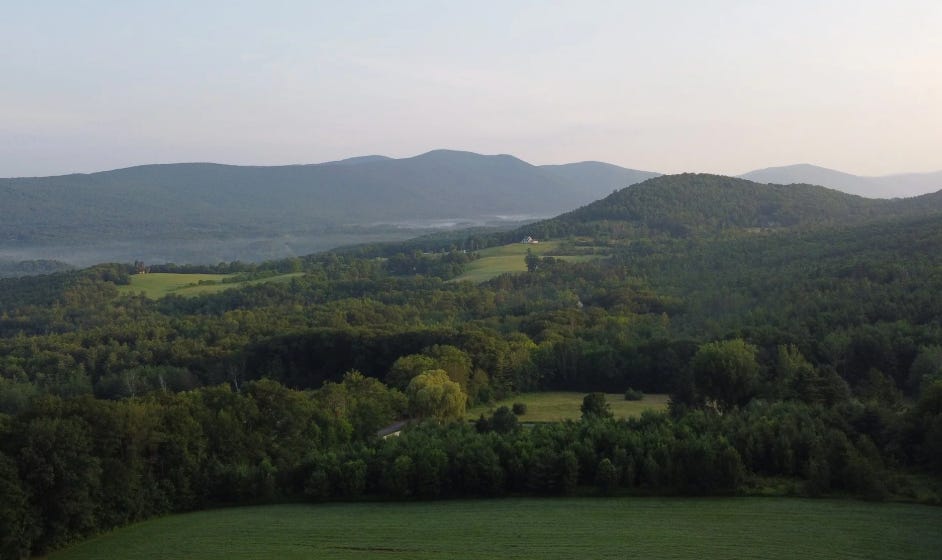The Full Story Behind the Shaftsbury Solar Decision
Why the elected town government, acting on behalf of all its constituents, would trade its opposition for nearly a quarter-million dollars in annual revenue and other benefits.
The Vermont Public Utility Commission (PUC) has approved a controversial 80-acre industrial solar project in Shaftsbury, culminating a two-year debate that has pitted the state's renewable energy goals against local environmental and aesthetic concerns. The decision grants a certificate of public good to VT Real Estate Holdings 1 LLC, also known as Shaftsbury Solar, a subsidiary of the Connecticut-based developer Freepoint Solar.
While the project is seen by supporters as a step toward meeting Vermont's ambitious climate targets, it has drawn fierce opposition from neighbors and environmental groups concerned about the loss of forests and farmland. This article provides a comprehensive overview of the project, the commission's ruling, the arguments from all sides, and what the future holds.
The Project and the Commission's Decision
The project will be built on a sloping hillside comprised of meadows, forests, and agricultural fields. While the solar panels themselves will cover 80 acres, the total land area disrupted during construction is estimated to be 104 acres.
In their final order, PUC Chair Edward McNamara and Commissioner Riley Allen stated the decision was “heavily informed by Vermont’s ambitious energy policy goals” as outlined in state law. They emphasized Vermont's role within the larger New England electrical grid and the need to meet greenhouse gas reduction mandates, particularly after reports indicated the state failed to meet its 2023 carbon reduction targets. The Department of Public Service, which represents the public interest in these cases, supported the project, stating it found no unresolved engineering or aesthetic issues and that the project aligns with the state's Comprehensive Energy Plan.
However, the decision was not unanimous in its reasoning. In a separate concurring opinion, Commissioner Margaret Cheney, while agreeing the project met the legal requirements, voiced significant reservations. She highlighted the environmental trade-offs, noting that the project requires clearing 42 acres of trees, including 34.6 acres of mature forest, and will disrupt 64 acres of agricultural land.
Cheney pointed out that since the power and renewable energy credits can be sold out-of-state, “Vermont will bear the burdens of this facility but might not directly reap the environmental benefits that it provides.”
Environmental Concerns vs. Economic Benefits
The PUC's decision reflects a central tension in Vermont's energy policy: how to balance the need for large-scale renewable energy with the protection of the state's natural landscape.
Arguments from Opponents
Opponents, including the organization Vermonters for a Clean Environment (VCE), have been vocal in their criticism. VCE's executive director, Annette Smith, called the project the “solar equivalent” of the highly controversial Lowell Wind Project, arguing that the clear-cutting of mature trees and disruption of agricultural soils negates any potential climate benefits.
Other concerns raised by groups like Stop Shaftsbury Solar and local residents include:
Loss of Farmland: The project will be built on prime agricultural soils, which opponents argue should be preserved for food production.
Habitat Destruction: The development will fragment a wildlife corridor between the Taconic and Green Mountains and destroy threatened tree species.
Increased Runoff: Opponents fear the large, impervious surfaces of the solar panels will increase stormwater runoff and potential flooding in an already prone area.
Aesthetic Impact: Many feel the industrial-scale project is out of character with the rural landscape.
Local Support and Financial Incentives
On the other side, the project has the support of the Shaftsbury Select Board. In a statement, Chair Zoe Contros Kearl acknowledged the contentious nature of the project but urged residents to focus on the positive impacts. According to the Host Town Agreement, these benefits include:
Increased funding for the local elementary school.
Substantial property tax revenue for the town's municipal budget.
Funding for a new brush truck for the Shaftsbury Fire Department.
The Bennington County Regional Commission also supports the project, stating it will help the region meet its renewable energy goals, provided the developer manages the impacts on aesthetics, soils, and infrastructure. Similarly, the Vermont Agency of Agriculture, Food and Markets, while expressing concern over the loss of farmland, noted that the certificate of public good requires the developer to ensure long-term protection of agricultural soils.
The Broader Context: State Policy and Federal Pressures
The debate over the Shaftsbury project is taking place within the larger context of Vermont's energy policy. The state's Global Warming Solutions Act mandates significant reductions in greenhouse gas emissions, putting pressure on regulators to approve renewable energy projects.
Financial pressures also played a role. Project intervenor Kit Ausschnitt noted that the developer's lawyers cited changing federal tariff policies and the potential loss of $20 million in federal subsidies as reasons for the PUC to make a swift decision, raising concerns among opponents about the project's long-term financial viability.
What Happens Next?
Opponents of the project have stated they are likely to appeal the Public Utility Commission's decision to the Vermont Supreme Court. This legal challenge could delay the project for months or even years.
If the decision is upheld, Freepoint Solar can move forward with construction, subject to the numerous conditions laid out in the 139-page certificate of public good.
Meanwhile, the controversy has sparked a broader conversation about how and where Vermont should site large-scale renewable energy projects. Commissioner Cheney's concurring opinion suggested that the state may need to "create incentives to site very large facilities away from unspoiled land and close to existing infrastructure," a sentiment echoed by many opponents who support smaller-scale solar on rooftops and in developed areas. The outcome of the Shaftsbury case will likely influence these future policy discussions.



